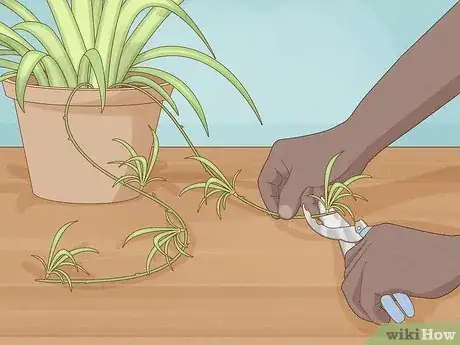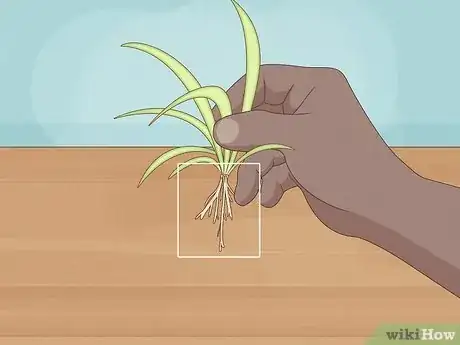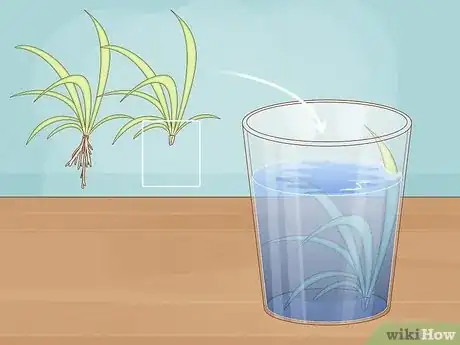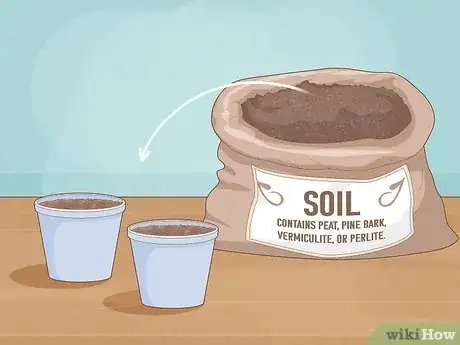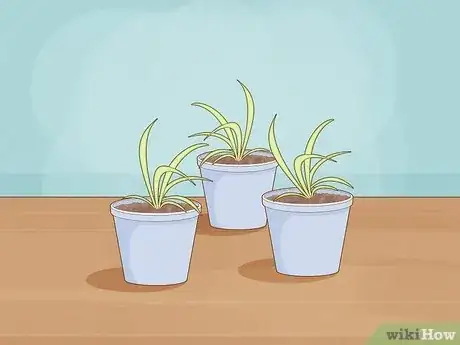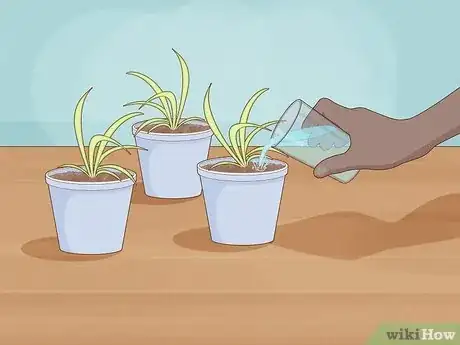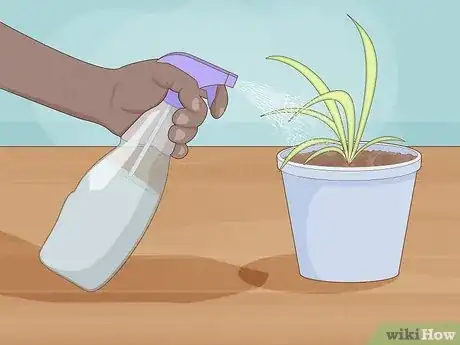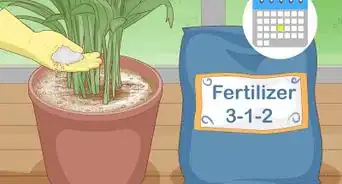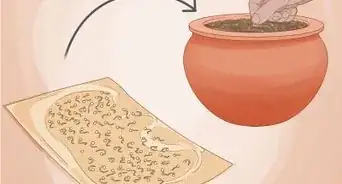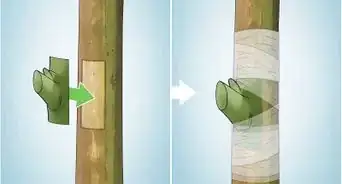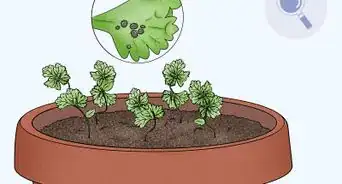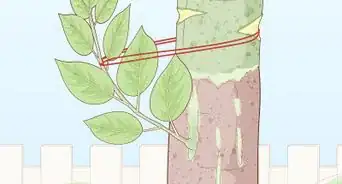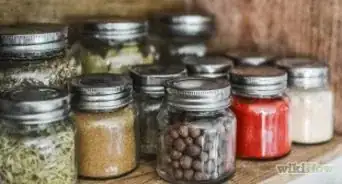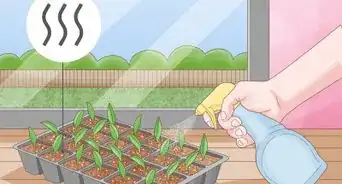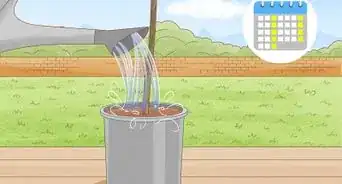This article was co-authored by Lauren Kurtz and by wikiHow staff writer, Kyle Hall. Lauren Kurtz is a Naturalist and Horticultural Specialist. Lauren has worked for Aurora, Colorado managing the Water-Wise Garden at Aurora Municipal Center for the Water Conservation Department. She earned a BA in Environmental and Sustainability Studies from Western Michigan University in 2014.
This article has been viewed 61,889 times.
Spider plants, also known as airplane plants and spider ivy, are common flowering houseplants that have long drooping leaves. After a spider plant flowers, baby spider plants appear on the flower shoots. These baby spider plants can be clipped off and easily propagated.
Steps
Clipping and Rooting Baby Spider Plants
-
Cut the baby spider plants at the stems connecting them to the flower shoot. The flower shoots are the long shoots that all the baby spider plants are growing off. If you're having trouble finding the baby spider plants, look for the miniature versions of a full-grown spider plant that are growing on the mother plant.[1]
- Each baby spider plant you propagate will grow into a full-size spider plant.
-
Examine the baby spider plants to see if they have roots. If they do, the roots will be located underneath the base of the baby plants. The baby spider plants need to have roots before they can be propagated.[2]Advertisement
-
Place any baby spider plants without roots in a container with water. You’ll need to wait for their roots to grow in before you can propagate them in soil. Fill the container with just enough water to cover the root area of the baby spider plants. You may need to lean the plants against the side of the container so the leaves aren’t submerged in water. Leave the plants in the container until their roots appear, which could take a few weeks.[3]
- Place the container somewhere that gets indirect sunlight.
- If your baby spider plants already have roots, you can skip this step.
Potting Your Baby Spider Plants
-
Fill a small pot with a moisture-retaining soil for each baby spider plant. Baby spider plants can grow in a wide variety of soil types, but a moisture-retaining soil is the best choice. Look for soils that contain peat, pine bark, vermiculite, or perlite.[4]
- Use a pot that has drainage holes on the bottom.
-
Plant each baby spider plant in its own pot. Dig a shallow hole in the center of the potting soil in each pot and place the roots of the baby spider plants in the holes. Fill in the holes and gently pack the surrounding soil down so the baby spider plants remain upright.[5]
-
Water the baby spider plants immediately until water drains out of their pots. When you’re finished watering them, dump the excess water out of the potting trays. That way the baby spider plants won’t be sitting in water, which can cause root rot.[6]
-
Keep the soil moist until you see new growth. Baby spider plants need a lot of moisture until their roots get established. Check their soil daily and water them if the soil is beginning to dry out. Once you notice new growth on your baby spider plants, start letting the soil dry out in between waterings.[7]
Things You’ll Need
- Gardening shears
- Small container
- Pots with drainage holes
- Moisture-retaining potting soil
- Spider plant with babies
References
- ↑ https://www.youtube.com/watch?v=EKMFUYUbCcM&feature=youtu.be&t=45
- ↑ http://www.gardenloversclub.com/houseplants/spider-plant/propagate-spiderettes/
- ↑ https://getbusygardening.com/how-to-propagate-spider-plants/
- ↑ http://mrec.ifas.ufl.edu/Foliage/folnotes/spider.htm
- ↑ https://getbusygardening.com/how-to-propagate-spider-plants/
- ↑ https://getbusygardening.com/how-to-propagate-spider-plants/
- ↑ https://getbusygardening.com/how-to-propagate-spider-plants/
About This Article
To propagate baby spider plants, use gardening shears to clip the baby spider plants off the flower shoots on the mother plant. If any of the baby plants don’t have roots, put them in a container with water so the bottoms of the plants are submerged in the water. Wait for roots to form on the plants before you pot them. Once your baby spider plants have roots, pot them in a moisture-retaining soil and water them thoroughly. For more tips on propagating baby spider plants, keep reading!
